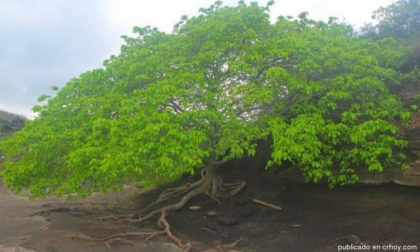
www.cabroworld.com
A quiet Sunday on Cabuyal Beach scared the life out of Carlos Agüero, his wife Maricruz Herrera, and their two and three-year old children.
The residents of Belén, Heredia, found shade under a tree to rest throughout the day. The children were playing and manipulating the fruits of the tree that protected them from the sun, without imagining what would happen the next day: Daniel (3) and Alejandro (2), woke up with blisters and a rash in their arms, face and several body parts.
There were several similar trees, […] and we saw them as good shade because they were very green and we got the children, the chairs, and the toys and stayed there several hours. The children began to play with some fruits. I didn’t think it was bad. I only told them not to put them their mouths. They just threw them and then climbed the branches, because it was a very low tree,”
explained Agüero.
The next day, when we checked them, we saw those wounds that were in some parts like burns and in others like allergies,”
added the concerned father.
Faced with this situation, they looked for a doctor in the area, who asked if they had had contact with the tree known as “Manzanillo de la muerte” (Hippomane mancinella). The specialist explained that it is extremely dangerous and that -if swallowed- it can cause poisoning.
Mainor Carranza, forestry engineer of the Juvenal Valerio Herbarium of the National University (UNA), explained that this plant is extremely dangerous, not only if ingested, and that it is common in the coastal part of the Pacific area.
People do not know that the tree has a very toxic sab […] and if it rains, its milky sab is diluted and can cause swelling and burning for everyone under the tree,”
explained Carranza.
The official recommended that washing the exposed areas with plenty of water and, if swallowed, seeking medical attention immediately is crucial. Carranza said that these trees should be labeled, especially on highly-visited beaches.